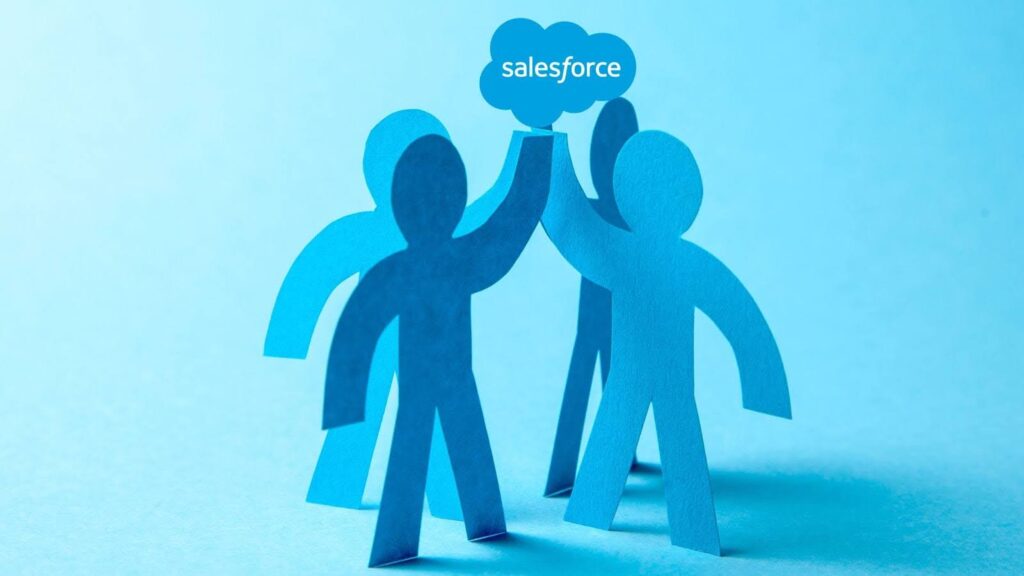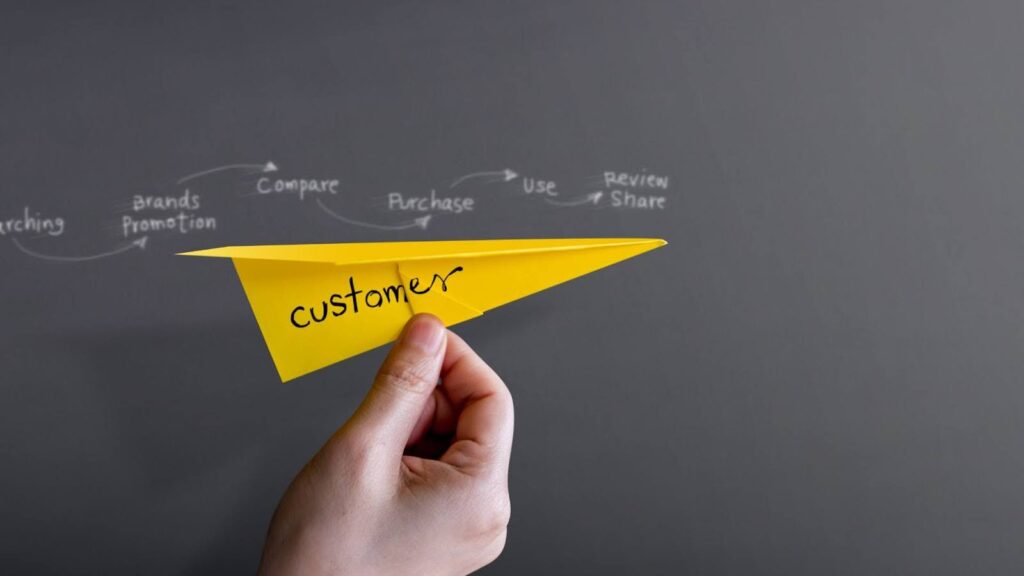Agile Project Management for Digital and AI Transformation

Businesses worldwide have two choices: digitise yourselves or go extinct. This means you MUST meet evolving customer expectations, automate tasks, and drive productivity to survive and thrive. However, over the years, we’ve witnessed many organisations struggle with slow decision-making and unexpected roadblocks that have delayed their digital and AI transformation initiatives. Their traditional project management approaches often fell short in handling the fast-paced and unpredictable nature of AI-driven transformation initiatives. This is where Agile project management is different. It offers the necessary flexibility and efficiency to help you navigate the complexities of digital transformation. In this article, let us understand more about how Agile methodologies align with your digital and AI transformation efforts. Understanding Agile Project Management Agile project management is not a new term to many of us. The most commonly accepted definition of Agile Project Management is that – “It is an iterative methodology for managing the software development cycle.” The key aspect of agile project management is that it revolves around frequent releases and integrates customer feedback into each cycle. Now, when you adopt agile methodologies in your AI digital transformation projects, your team experiences enhanced efficiency and quickly adapts to the changing needs of the project. This makes it easier to drive successful outcomes that go beyond basic software development. Key Agile Frameworks for Digital and AI Transformation While there are several agile frameworks available, we are going to focus only on two – Scrum – It emphasises short and time-boxed sprints where collaboration is prioritised through daily stand-ups and retrospectives. Scrum has clear roles, such as product owner and scrum master who majorly focus on delivering high-value features. This makes them incredibly effective for AI-driven digital transformations that require continuous refinement. Kanban – It is another widely accepted agile framework for digital and AI transformation. It focuses on visualising workflows and limiting work-in-progress (WIP). Kanban helps you optimise efficiency by ensuring that tasks move smoothly through the development process. It is especially beneficial in AI transformation, where data flows and testing needs continuous management. Why is Agile Essential for Digital and AI Transformation? There are several reasons why agile frameworks are essential for managing your digital and AI transformations. Here are the top ones – Built Around Adaptability Digital and AI transformations are dynamic by nature. Whenever new technologies emerge or market demands shift, agile’s iterative approach helps your team align perfectly with the changes. We also know that agile breaks down projects into manageable chunks. This allows for frequent adjustments based on feedback so that your digital and AI transformation efforts run in tandem with the latest priorities. Facilitates Flexibility and Collaboration AI and digital projects often demand interactions between cross-functional teams. Agile facilitates collaboration between them by encouraging seamless communication. Its focus on seamless collaboration ensures that ideas flow freely between your teams and feedback is incorporated promptly. This means a valuable response is always guaranteed to any unforeseen challenges during the transformation process. Delivers Faster and More Successful Results AI and digital transformation projects can often get complex. They will involve several new technologies, and you venturing into uncharted territories. Agile’s focus on delivering smaller, incremental results allows you to see value early and frequently. With regular progress updates, you can pivot quickly and reduce the risk of failure. Ultimately, you will be able to deliver tangible results faster than traditional project management methods. It has a Customer-Centric Focus Digital and AI transformation are not just about implementing new technologies—they’re about improving the customer experience. Agile’s emphasis on ongoing feedback from customers and stakeholders ensures that the solutions being developed align with real-world needs. This automatically increases the likelihood of adoption and success. Implementing Agile in Digital and AI Transformation: Step-by-Step Guide Here are the different steps you need to follow to implement an agile framework in your digital and AI transformation – Step 1: Define the Vision and Objectives Always have a clear vision for your digital or AI transformation. Two of the most common objectives include improving customer experience and optimising processes. If you don’t have one, you can use Salesforce Customer 360 to gain a comprehensive understanding of your customer data. It will help define measurable goals that align with customer expectations. Salesforce Analytics can also provide the necessary insights to guide you in navigating this step. Step 2: Select the Right Agile Framework Choose an Agile framework that fits your organisation’s size and transformation needs. Frameworks like Scrum, Kanban, or SAFe are popular. Even Salesforce offers integration with various Agile project management tools like Salesforce Agile Accelerator that help your teams adopt Scrum, Kanban, or other frameworks. Step 3: Assemble Cross-Functional Teams Now, form cross-functional teams with the necessary expertise. You can include developers, AI specialists, business stakeholders, Salesforce specialists, to name a few. Use Salesforce’s Chatter and other collaboration tools to help this newly formed team communicate efficiently and track project progress. Step 4: Conduct Agile Training Ensure that all team members, from leadership to developers, are trained in Agile principles. You can conduct Agile workshops via third parties to help build a strong foundation and ensure everyone is aligned on how to work within the framework. Salesforce offers a robust Trailhead platform with courses specifically designed to help teams get up to speed with Agile methodologies. Step 5: Start with Pilot Projects Begin with small pilot projects to test Agile implementation. These projects allow your teams to refine workflows and adjust processes before scaling up. Pilot projects in AI might focus on a specific model or feature development, providing quick feedback and results. Use Salesforce’s Sandbox environments to test new AI features and functionalities without impacting live systems. Step 6: Iterate and Improve Use Agile’s iterative nature to continuously refine digital and AI initiatives. After each sprint or milestone, gather feedback and adjust the direction as needed. This approach allows for rapid adjustments in response to new data. Use Salesforce’s Einstein Analytics and reporting tools to continuously monitor and analyse project outcomes. Step 7:
Salesforce Foundations: A Game-Changing Update Your Business Needs

It has been found that over three-fourths of customers want consistent interactions across departments. However, 55% feel like they are interacting with separate departments and not a single company. If you are one among them and you are a Sales Cloud or Service Cloud user, we have some amazing news for you. Salesforce has recently announced Foundations, which is a no-cost enhancement to your existing CRM. It offers you a unified view of your customer and helps build AI-powered experiences across multiple touchpoints. In this article, we will understand more about this update and how it impacts you and your end customers. What is Salesforce Foundations? In simple words, Salesforce Foundations brings your different departments, viz., sales, marketing, service, and commerce data, under one umbrella. It does this by offering enhanced functionalities to existing Sales Cloud and Service Cloud platforms. Through Foundations, a Sales Cloud user will get access to Service Cloud features and vice versa. Plus, you will gain access to marketing, commerce, data cloud, and Agentforce features. This means your brand can effortlessly create connected customer experiences without added upfront costs or complex data integrations. Now, do not confuse Salesforce Foundations with Salesforce Foundation. The latter is Salesforce’s charitable arm. Secondly, do not think that Foundations is a completely new product. It is simply an expansion pack of your existing Salesforce ecosystem with additional features and an updated UI that gives you a richer 360-degree view of your customers. Salesforce Foundations is available at no extra cost to the customers who are on the following editions: Enterprise Unlimited Einstein 1 Features of Salesforce Foundations Here are the core features of Salesforce Foundations categorised under different buckets: Department Features Sales Lead and opportunity management, account and contact management, Sales Console, pipeline management, quoting and pricing capabilities. Service Service Console, omni-channel routing, Knowledge Management, macros, and case management for proactive, personalised customer support. Agentforce AI-powered conversational assistant for support with autonomous apps using large language models (LLMs) to assist agents and customers. Marketing Data integration from multiple sources, customer segmentation, campaign management through Salesforce Flows, and automated marketing journey customisation. Commerce Direct-to-customer (D2C) storefront setup, Pay Now links for fast transactions, checkout experiences, and customer experience customisation (search, cart, etc.). General UI/UX Updated left-hand navigation and customisable homepage cards for quick access to top priorities (e.g., cases, opportunities, tasks). Extended Apps Access to AppExchange trial apps, including Webex, DocuSign, and RingCentral, for document management, collaboration, surveys, telephony, and video conferencing. What are the benefits you can enjoy after adopting Foundations? By adopting Salesforce Foundations, you will straightaway experience enhanced productivity, better customer insights, and stronger collaboration between teams as you are essentially consolidating several key tools. It also simplifies day-to-day operations thanks to centralised data, seamless AI readiness, and features like payment processing and case management. This helps your teams work faster and more effectively. Additionally, by bundling powerful functionalities at no extra cost, Salesforce Foundations helps you cut down on third-party expenses, driving growth and innovation without added complexity. To understand the benefits of Salesforce Foundations more thoroughly, let us go through three different business cases where Foundations can make a mark – Business Case 1: With integrated insights into service cases, your marketing department can now seamlessly add relevant customers(say, someone looking for an upgrade) to marketing nurture campaigns. This previously required separate service and marketing platforms. Business Case 2: When a customer is ready to buy, your sales team can convert closed deals into payments quickly. They can seamlessly generate secure payment links directly from a quote or opportunity record. This eliminates the need for an external payment system. Business Case 3: Your service team can enhance onboarding by adding customers to personalised marketing journeys. When the time is ripe, they can upsell them with access to sales quotes and secure payment links. They do not need access to separate sales or marketing platforms. What does this mean for you? For starters, it prepares your business for the future by establishing a reliable data foundation essential for AI and machine learning. The platform’s Data Cloud ensures that customer information, engagement histories, and service records are stored and accessible in a unified, structured format, enabling accurate, real-time data analytics. This architecture supports AI applications like Agentforce’s conversational AI and intelligent automation. This, in turn, allows you to gradually adopt AI while using current data insights to refine and scale AI-driven processes effectively. Secondly, it redefines your technology investments by bundling critical capabilities within its core package at no extra cost. You can access features typically provided by third-party vendors—such as document generation, collaboration, and payment processing—directly within Salesforce, minimising additional expenditures. This bundled approach not only reduces operational costs but also encourages you to leverage Salesforce’s built-in tools. This maximises value and facilitates scalable growth without the complexity of multiple subscriptions or integrations. Such a streamlined investment structure allows you to focus resources on strategic growth rather than maintaining disparate systems. But… Salesforce Foundations is a massive shift for most users. While such changes can transform how your teams operate, keeping up with these substantial changes is challenging, especially without dedicated support. That’s where Brysa comes in. Recognised as one of the UK’s leading Salesforce consultants, Brysa offers expert guidance to help you navigate and maximise these updates effectively. With Brysa’s support, you can ensure smooth implementation, optimise your Salesforce experience, and focus on driving real business value without missing critical advancement
How Salesforce Can Help Increase Business Performance?

Salesforce has been carefully designed with performance in mind. It transforms the everyday operations of businesses by automating different workflows. This automatically puts a strong push on your team’s productivity. But that’s not all. Salesforce offers a lot more capabilities that can directly and indirectly increase business performance. In this article, we will understand how Salesforce offers a performance boost to your different business functions and how you can experience long-term improvements in operations. But first, let us understand some basics. Challenges in improving business performance It is an increasingly global and competitive marketplace out there. It is no longer a competition just with local players. Even companies worldwide want a share of the pie. This globalisation increases the need for operational efficiency. Unfortunately, various factors like supply chain disruptions, fluctuating market demands, and geopolitical uncertainties make it difficult to enhance business performance. Moreover, customer expectations have also shifted. They want more personalised and faster service. This makes it harder for businesses to scale efficiently while still meeting these demands. Balancing innovation, operational agility, and customer satisfaction requires businesses to be constantly evolving. This is a significant challenge in maintaining consistent performance improvements. Finally, businesses have to balance economic growth with environmental responsibility. This can affect business performance negatively. On one hand, they need to focus on reducing carbon footprints. On the other hand, they need to ensure it doesn’t affect business performance These efforts can also demand significant investment in new technologies. Even processes and supply chain adjustments have to be made. What are the business KPIs Salesforce focuses on? To understand how Salesforce positively impacts different business functions, it is first critical to understand various key performance indicators (KPIs) that Salesforce impacts. This will help you understand what success means across different functions. So here are they: Sales Volume: Salesforce streamlines lead management. It also accurately forecasts sales and opportunities. These capabilities enable you to close more deals. Ultimately, you will experience increased sales volume. Customer Retention Rate: Salesforce offers 360-degree views of customers and their engagement. This enables you to enhance customer satisfaction, leading to higher retention rates. Lead Conversion Rate: Salesforce offers features like lead scoring and automated follow-ups. These help convert more leads into paying customers. Sales Cycle Length: Salesforce reduces the sales cycle by automating repetitive tasks. It also provides real-time updates, enabling better communication with prospects. Customer Satisfaction (CSAT): Salesforce offers tools for case management and personalised customer support. They help improve customer service and satisfaction. Average Deal Size: Salesforce helps identify cross-sell and upsell opportunities. It does this by offering data-driven insights. This helps increase the average value of each deal. How do different business functions get a performance boost from Salesforce? Now that you have a good idea about the different KPIs, let us understand how different Salesforce products positively impact different business functions: 1. Sales Salesforce Sales Cloud can empower your sales teams to manage leads and track opportunities with greater efficiency and accuracy. The platform can shorten the sales cycle and improve conversion rate as your team has access to real-time customer data all the time. In addition, Einstein Analytics offers intelligent insights for cross-selling and upselling products and services. 2. Marketing Your marketing department will experience improved performance through Salesforce’s Marketing Cloud platform. It allows you to create personalised, data-driven campaigns across multiple channels. Through its segmentation features, your marketing team can target the right audience with the right message. This greatly improves engagement and campaign effectiveness. 3. Customer Service Salesforce’s Service Cloud is a game-changer for customer service teams. It enables your CS team to deliver faster and more personalised support. With features like Omni-Channel Routing and Einstein Bots, customer inquiries are efficiently directed to the appropriate agents or resolved through AI-powered chatbots. Your team always gets a 360-degree view of customers, allowing them to improve customer satisfaction (CSAT). 4. Accounting By adopting Salesforce’s Accounting Seed, you can enhance financial management and performance. It provides end-to-end visibility into financial processes, from billing to revenue recognition. It also automates tasks like invoicing, payments, and general ledger management. Your finance team can also customise workflows, ensuring better alignment with business operations. Long-term business improvements as a result of Salesforce The entire Salesforce ecosystem is hosted on a cloud-based infrastructure. This ensures that all the tools can scale along with your business. It doesn’t matter whether you expand to new markets or experience a sudden surge in customer volumes; Salesforce’s flexible architecture will support your business growth, no matter what. The best part is that you do not need to make any major infrastructure overhauls. With customisable features and integrations, you can continuously evolve your processes. Secondly, Salesforce’s built-in AI capabilities, like Einstein AI, also position you for long-term success. It quickly prepares you for an AI-driven future through capabilities like predictive analytics, intelligent automation, and personalised recommendations. With minimal effort, you can optimise processes and customer interactions, giving you a competitive advantage over others. Finally, Salesforce will also support your long-term sustainability efforts by helping you track your environmental impact and carbon footprint through its Net Zero Cloud. Over time, you can use this platform to align your operations with sustainability goals, meet regulatory requirements, and demonstrate corporate social responsibility. This focus on sustainability will enhance your brand reputation in the future in a world increasingly focused on green business practices. Conclusion Salesforce offers you an array of platforms to drive performance improvements across various functions. By streamlining processes and providing data-driven insights, Salesforce can help you operate more efficiently, freeing up time and resources to focus on innovation and growth. Ultimately, your performance improves in no time. However, implementing and maintaining the Salesforce ecosystem is not easy as it evolves at a rapid pace, with new features, updates, and integrations being regularly introduced. That’s where Brysa, the UK’s leading Salesforce consultant, comes in. We specialise in helping businesses navigate the complexities of Salesforce implementation and optimisation. To know more, contact us now.
How Salesforce Media Cloud Transforms Media Operations with Smart Automation and Intuitive Workflows

Today’s media companies have their hands full. On the one hand, they face increasing pressure to manage complex workflows. On the other hand, they need to maintain creativity and flexibility to meet the demands of their clients. Whether it’s handling advertising campaigns or content distribution, the need for automation has never been greater for them. This is where Salesforce Media Cloud comes into play. As a powerful platform tailored for media companies, Salesforce Media Cloud can automate various operations and drive better results for media companies from the word go. In this post, we will understand the key challenges faced by Media companies first and then find out how Salesforce Media Cloud helps overcome these challenges through its rich feature set. Key operational challenges faced by different types of media companies Here are some key challenges faced on a daily basis by different types of media companies – Challenges Faced by OOH / DOOH Media Publishers Managing outdoor advertising spaces gets challenging due to finite inventory. Publishers often face unpredictable demand fluctuations. This can lead to either underutilisation or overbooking of their available spots. Maintaining physical assets, whether static billboards or digital screens, requires significant investment. This includes installation, repair, and upgrades of display technology. DOOH displays, in particular, demand regular updates. While traditional OOH media has struggled with measuring campaign effectiveness, the introduction of DOOH helps to some extent. However, accurately tracking foot traffic, engagement, and return on investment remains difficult without advanced technologies. Operating in the OOH sector means complying with various regulations regarding where advertisements can be placed, what type of content is allowed, and the duration of ad displays. In urban areas, this can be highly restrictive, impacting revenue generation. DOOH media publishers must invest in new technologies to stay competitive. The challenge lies in integrating programmatic advertising and ensuring real-time updates and content accuracy across multiple digital displays. Challenges Faced by OOH / DOOH Media Agencies OOH/DOOH media agencies often work with clients looking to integrate their outdoor campaigns with digital and other media channels. Ensuring seamless integration and maintaining consistency across various platforms is a significant operational hurdle. Measurement of effectiveness is another challenge. This is unlike social media, where click-through rates (CTR) and conversion data are readily available. OOH/DOOH metrics are often less standardised. This creates great difficulty in demonstrating ROI to clients. Managing multiple vendors and sites across different regions means handling complex inventories. This includes both traditional static spaces and newer digital ones. All of these require advanced booking systems and real-time data on inventory availability. Outdoor campaigns must be executed within short timeframes. DOOH offers flexibility with digital displays. However, the coordination between advertisers, creative teams, and publishers is still a challenge. Crafting effective OOH/DOOH campaigns that fit the specific size, location, and audience of each display is complex. Additionally, agencies must ensure creative content complies with local regulations. This is true mainly for messaging and visual standards. Challenges Faced by Digital Media Agencies In an environment oversaturated with digital ads, consumers often experience ad fatigue. This can lead to declining engagement and higher bounce rates. Additionally, privacy regulations like GDPR and CCPA complicate targeting strategies. This makes it harder for agencies to collect and utilise customer data effectively. Digital agencies depend on platforms like Google, Facebook, and YouTube. However, they constantly evolve their algorithms and policies, which can disrupt ongoing campaigns. This forces agencies to rapidly adapt strategies to maintain campaign performance. Multi-touch attribution in digital media is complex. In simple words, when dealing with multiple channels like social media, search engines, display networks, and email. attributing conversions accurately to specific touchpoints is challenging. This can lead to inefficiencies in optimisation efforts. Digital media clients often have high expectations for quick results with limited budgets. Balancing client demands and optimising ad spend to achieve measurable results is a challenge. It can often put significant pressure on agencies to deliver consistent performance. Digital media operations is getting more and more complicated, thanks to advent of programmatic advertising and advanced data analytics. Finding and retaining specialised talent who know these areas is a major challenge. Agencies must also manage resources across multiple projects, complicating it even further. Key Salesforce Media Cloud features To overcome the above challenges, media houses must adopt Salesforce Media Cloud, which is an AI-powered CRM tailored for Media and publishing businesses. It comes with pre built modules, workflows, and automation designed for media business processes. You can effectively cut costs with time-saving automated solutions. Here are some of its salient features: Industry-Specific Data Model: Salesforce Media Cloud uses a customisable and extensible data model built for media and entertainment providers. This allows media companies to efficiently manage complex data and improve content delivery by integrating audience preferences, subscription details, and advertising information in one unified platform. Omniscript: This feature enables users to design dynamic customer interactions without needing code. It is also possible to deploy them across multiple channels and devices. Using this media companies can create seamless, personalised user experiences. They can also automate interactions for customer support, subscription services, or ad sales, all while reducing development costs and time. Business Rules Engine: This feature helps implement automated decision-making processes tailored to media workflows. Media companies can streamline operations by automating tasks such as campaign approvals, content distribution, audience targeting, and so on, all leading to improved agility and quicker response times. Advertising Sales Management: This feature accelerates advertising sales and optimises campaign performance by integrating sales data with audience insights. Media companies benefit by managing advertising inventory more effectively. This improves their sales team’s productivity and helps them deliver better ROI for advertisers. Industries CPQ: This feature utilises advanced order capture and guided selling with a media-specific CPQ system that supports complex pricing models. Using this feature, media companies can simplify the entire sales process. They can offer personalised packages and pricing based on customer needs. This leads to higher sales conversion rates and ad efficiency. Order Management: This feature helps in managing orders
Tools to Design Seamless Customer Journeys – From Prospects to Brand Advocates

Customer is king’ is a cliched but highly relevant statement in today’s world. Why? For starters, customers are spoilt for choices. For every product and service they seek, there are at least 10 solutions available in the market. As a business what do you do to beat the competition? Simple, make them feel special. And how do you achieve it? By carefully designing a successful customer journey. In this article, we are going to dive into this popular term often used in the sales and marketing world. Plus we are going to highlight some of the popular tools useful in streamlining different stages of a customer journey. What is a customer journey? In simple words, it is the complete experience a customer has with your brand. It typically includes interactions across all the channels, devices, and touchpoints. From the time they come to know about your brand till the time they recommend it to others, every step is part of a customer journey. In other words, a customer journey encompasses an entire customer lifecycle – from awareness to loyalty. Key stages of a customer journey (Customer POV) There are 5 stages in a typical customer journey, and we are going to classify them into the following 3 categories – Before purchase This phase starts with the customer looking to improve their business. They may face a pain point such as a lack of productivity or efficiency in their team. Initially, they do not know how to solve these pain points. But then comes a trigger where they discover an opportunity to solve them. It could be sales numbers going down or customer complaints surging. This is also the stage where the customer starts searching for a solution to their problem. In this initial search, they will come to know about the best solutions to their problems, including yours. This is often called the awareness stage of the customer journey However, this often leads to a “long list” of potential solutions. During purchase In this phase, the customer converts the long list into a shorter one by doing a thorough brand review. They will consider your service as a potential solution to their pain point. This is called the consideration stage. They will contact you and the other shortlisted vendors to give a demo. Post-demo, the solutions will be reviewed and if you have succeeded in convincing them, your solution will be chosen. This is called the purchase stage. The implementation process begins officially. Post-purchase This is the phase where implementation is complete and the solution is up and running. For you, this stage involves training all the users and giving them access to an account manager for support (when they need it). You continue to follow up and help the customer reach their goals and ensure that they continue to partner with you. This is the retention stage. If you have succeeded in offering the best experience to the customers, they will become loyal to your brand and become brand advocates. This stage is called the advocacy stage. Challenges in designing a customer journey Here are some of the key challenges typically encountered by businesses while designing a customer journey – Challenge #1 – Unable to accurately map how customers move through the journey It is not easy to collect and interpret customer data. This is true when you do not have the right tools at your disposal. Most businesses lack clear insights into how their customers will behave. They also do not know their preferences and pain points. Without such information, it becomes difficult to craft a journey that aligns with business needs. Challenge #2 – Unable to create a consistent experience across all channels Your customers will interact with you via social media, websites, stores, and customer service. It is not easy to ensure consistency in messaging, tone, experience, and quality across all these touchpoints. Lack of consistent experience across all channels will impact the brand recall and you might miss out on key opportunities. Challenge #3 – Unable to personalise the journey It is important to personalise the journey for different types of customers. However, scaling this across a large customer base can be overwhelming, particularly for small businesses. Most businesses struggle to implement effective segmentation. They also fail to adopt personalised content due to limited resources or a lack of right tools. Challenge #4 – Unable to track the effectiveness of the customer journey Most businesses are able to identify relevant KPIs and use them to measure success. However, they struggle to connect these metrics back to the specific stages of the customer journey. They consider it complex, especially with fragmented data systems. This is particularly true, when they do not have the right tools at their disposal. If you carefully notice these challenges, you will find the common thread linking all of them is the lack of right tools to design the customer journey. To help you in this regard, we are going to take a look at different tools in the Salesforce SSOT ecosystem that can not only overcome the above challenges but also streamline the whole customer journey. Marketing tools used to streamline customer journey Here are some of the key marketing tools you can adopt in the Salesforce ecosystem to streamline the ‘before purchase’ phase of customer journey – Salesforce Marketing Cloud This is the most important tool you would need in the before purchase phase. It lets you effortlessly manage customer engagement across different channels including common ones like email, mobile, social media, and ads. With this tool at your disposal, you can also personalise your marketing campaigns and automate workflows. The best part – you can gain deep insights into customer behaviour allowing you to create tailored, data-driven campaigns. The following tools can be integrated with Salesforce to streamline the customer journey in the before purchase phase – Demandbase Salesforce Integration: It is a popular Account-Based Marketing (ABM) platform. Using it, you can target high-value accounts. It is adept
Top Salesforce Features for Green Engineering Companies to Enhance Sustainability

The World We Live In and the Road Ahead The global push toward sustainability has gained momentum in recent years. It is clearly driven by the undeniable impact of climate change, resource depletion, and environmental degradation. As industries work to reduce their carbon footprint and minimise their environmental impact, green engineering companies have emerged as pivotal players in this transformation. These businesses focus on designing, implementing, and scaling sustainable solutions that meet the needs of industries, society and the environment. Salesforce, a leading customer relationship management (CRM) platform, offers a suite of tools and features that enable these companies to streamline their operations and measure the impact of their sustainability efforts. In this blog, we’ll explore how Salesforce achieves this and what are the challenges these companies faced before adopting Salesforce. Government Mandate and Private Sector Interest in Green Engineering Governments worldwide are increasingly enacting policies and regulations aimed at curbing greenhouse gas emissions and promoting sustainable practices. For instance, the EU has enacted ambitious climate regulations under the European Green Deal, aiming to reduce greenhouse gas emissions by at least 55% by 2030, compared to 1990 levels. Similarly, the U.S. government passed the Inflation Reduction Act in 2022, which aims to reduce the country’s emissions by 1 billion tons in 2030. Such mandates are shaping how industries operate, and green engineering companies are at the forefront of this change. From implementing renewable energy projects to creating environmentally friendly construction materials, these companies are critical in meeting global sustainability goals. Private sector interest in green engineering has also surged. Many large corporations have announced ambitious sustainability targets, from becoming carbon-neutral to adopting renewable energy and reducing waste. Investors and consumers alike are demanding that businesses take meaningful steps toward sustainability, and green engineering companies provide the expertise and solutions to help them achieve these goals. Work Done by Green Engineering Companies Several green engineering companies have already pushed the boundaries of what’s possible in sustainability. These companies often work on renewable energy solutions like wastewater treatment plants, solar and wind power, carbon capture technologies, and sustainable materials for construction. They are tackling some of the world’s most pressing environmental issues by creating solutions that are not only eco-friendly but also economically viable. Probst Group, one of our clients, and a leader in wastewater treatment technology, is dedicated to providing sustainable solutions for various industries, with a strong focus on green engineering. The company is involved in designing and implementing innovative wastewater treatment plants that not only manage waste but also generate renewable energy. For instance, their project in rural Wisconsin helped dairy processors build a centralised treatment facility. This plant significantly reduced phosphorus discharge, managed high-strength wastewater, and produced renewable energy from biogas, enough to power more than 1,200 homes. Additionally, the project reduced local truck traffic and supported future production expansion. Challenges in Balancing Business Growth and Providing Sustainable Solutions Despite their initiatives, green engineering companies face several hurdles, such as limited resources, competition from larger players, and a rapidly evolving regulatory landscape. For green engineering companies, scaling operations while maintaining their core mission of sustainability can be a significant challenge. As demand for green solutions increases, green engineering companies have to constantly find ways to expand their offerings and enter new markets without compromising their commitment to environmental stewardship. Another major challenge is striking the balance between profitability and sustainability. In a competitive market, businesses often face pressure to cut costs, but this can sometimes lead to decisions that undermine their green credentials, such as using less sustainable materials or bypassing certain environmental regulations. The need to strike a balance between short-term financial gains and long-term environmental impact is a constant struggle for many companies. Moreover, the regulatory landscape is constantly changing. Companies must stay up-to-date with the latest government mandates on emissions, waste management, and energy use, which can vary by region. Keeping track of these regulations, especially when operating across multiple jurisdictions, can be overwhelming. How Salesforce and its Rich Feature Set Helps to Maintain this Balance? Salesforce offers solutions to these challenges by providing tools and features to manage projects, monitor regulatory compliance, and measure sustainability metrics—all in one place. The platform’s ability to centralise data, track performance, and forecast future trends allows companies to make informed decisions that align with both their business objectives and sustainability goals. Below are some key modules of Salesforce that can make a significant difference for Green Engineering companies: 1. Net Zero Cloud Salesforce’s Net Zero Cloud is one of the most valuable tools for green engineering companies. It enables organisations to track, analyse, and report their environmental impact, such as greenhouse gas emissions, water usage, and waste production. This tool provides real-time insights into a company’s sustainability performance, helping them identify areas for improvement and ensuring they remain compliant with government regulations. By using Net Zero Cloud, green engineering companies can calculate their carbon footprint, set emission reduction targets, and measure their progress over time. This data is crucial for companies looking to build trust with stakeholders, including investors, clients, and government agencies, by demonstrating their commitment to sustainability. 2. Customer 360 Salesforce Customer 360 gives companies a unified view of their customers, partners, and suppliers. For green engineering companies, this feature allows for better relationship management across multiple touchpoints, including sales, customer service, and project management. This unified approach ensures that everyone within the organisation is aligned and working toward common sustainability goals. Customer 360 also helps green engineering companies build stronger partnerships by enabling seamless communication and collaboration. Whether they’re working with government agencies to meet regulatory requirements, or with suppliers to source sustainable materials, or with clients to build solutions, Salesforce facilitates the necessary coordination and alignment. 3. Einstein Analytics Salesforce Einstein, the platform’s artificial intelligence (AI) tool, provides powerful predictive analytics that can help green engineering companies optimise their operations. Using machine learning algorithms, Einstein can analyse vast amounts of data to uncover patterns and predict future trends. For example, Einstein can
Top Reasons Why Salesforce Sales Cloud is Essential for Modern Sales Teams

Customer Relationship Management (CRM) has become exceedingly important in sales due to two reasons. One is its ability to streamline processes. Two is its capability to generate valuable customer insights that drive revenue growth. As sales strategies shift toward a more personalised and customer-centric approach, CRMs provide the means for tracking nurturing relationships. Now, the first thing that might come to most people’s minds when they hear CRM is Salesforce Sales Cloud. This is quite understandable because, over the years, it has been instrumental in improving customer satisfaction and loyalty for businesses. In this article, we will understand 10 reasons why Salesforce Sales Cloud has become critical for modern sales teams. Overview of Salesforce Sales Cloud Salesforce Sales Cloud is a CRM platform designed to help businesses manage and optimise their sales processes. It provides tools for sales automation, lead and opportunity management, contact management, and sales forecasting. Such capabilities allow sales teams to track and prioritise leads, manage pipelines, and close deals more efficiently. Sales Cloud Salesforce offers AI-powered insights through Salesforce’s Einstein AI. Through its predictive analytics capabilities, it enables smarter decision-making. Sales Cloud also integrates with various other Salesforce applications and third-party tools. Its customisable dashboards and real-time data allow organisations to gain deeper insights into their sales performance. Ultimately, Sales Cloud is an essential solution for driving revenue growth and improving customer relationships. Reasons Why Salesforce Sales Cloud is Essential for Modern Sales Teams Here are 10 compelling reasons why we think Sales Cloud is crucial in today’s business world – 1) Centralised Customer Data Management Salesforce Sales Cloud serves as a centralised hub for all customer information. It does this by smartly organising data from multiple sources into a unified platform. This includes details about customer interactions, transaction histories, preferences, and contact information. Ultimately, it ensures that sales teams have access to complete and accurate data at all times. Having a single source of truth eliminates data silos and ensures all team members access the most up-to-date information. This consistency enhances customer engagement, improves data accuracy, and helps sales teams build stronger relationships based on reliable information. 2) Enhanced Lead and Opportunity Management Salesforce Sales Cloud provides tools for tracking leads throughout their lifecycle. Automated lead scoring, nurturing workflows, and real-time tracking are classic examples. They allow your reps to prioritise high-value opportunities and ensure no lead falls through the cracks. Sales managers can easily visualise the entire sales pipeline, monitor progress, and identify potential bottlenecks using intuitive dashboards. This visibility not only facilitates better decision-making but also helps sales teams focus on deals that are more likely to close. Finally, by leveraging advanced analytics and AI-powered insights, Salesforce Sales Cloud helps sales teams identify the best strategies for converting leads. Targeted communication, personalised engagement, and timely follow-ups all become more effective, resulting in higher conversion rates. 3) Automated Sales Processes Salesforce Sales Cloud automates repetitive tasks like data entry, follow-up emails, and lead assignment. This automation reduces the time sales reps spend on administrative work. This, in turn, allows them to focus on selling and building customer relationships. Interestingly, automation not only speeds up sales processes but also ensures consistency in customer interactions. This leads to improved customer satisfaction, faster deal closures, and an overall boost in sales efficiency. 4) Real-Time Sales Insights and Analytics Salesforce Sales Cloud offers real-time insights through customisable dashboards and reports. Basic analytics equips sales teams with valuable data to monitor performance and track key metrics. These insights help them make data-driven decisions and quickly adapt to market changes. Advanced analytics of Sales Cloud, on the other hand, help forecast sales trends with greater accuracy. This allows sales managers to predict future revenue, plan inventory, and allocate resources effectively. Long story short, with the analytics capabilities of Sales Cloud, sales teams can: Analyse past performance Track customer behaviour Identify market trends Find growth opportunities Refine their sales strategies. All of these help with data-driven decision-making and ultimately better business outcomes. 5) Improved Collaboration and Communication Salesforce Sales Cloud offers built-in collaboration tools like Chatter. This allows sales teams to share updates, collaborate on deals, and communicate effectively within the platform. It creates a more cohesive intra-team environment and drives alignment toward common goals. The platform also enables seamless communication between sales, marketing, customer support, and other departments. This inter-team communication ensures a unified approach to customer engagement. It’s common knowledge that improved communication breaks down silos and creates a more integrated customer experience. 6) Customisation and Scalability Salesforce Sales Cloud is highly customisable. You can tailor workflows, fields, and layouts to match your unique sales processes. While this may not be possible on your own, you have Salesforce experts like Brysa who can ensure that the platform is adapted to any industry or business model. And that’s not even the best part. As your business grows, Salesforce Sales Cloud can grow along with you. It can scale up to accommodate increased data, users, and processes without compromising performance. This scalability ensures that the platform continues to meet business needs. The size or growth pace of your company doesn’t matter. 7) Mobile Accessibility for On-the-Go Sales Teams The Salesforce mobile app (both iOS and Android) provides your sales teams with access to real-time data, dashboards, and customer information. This enables them to work effectively in a hybrid model. Such levels of mobility are essential for sales reps who frequently travel or work remotely. Also, with mobile access, sales reps can update records, schedule follow-ups, and respond to customer inquiries on the go. This flexibility leads to faster response times and improved customer satisfaction. 8) Integration with Other Tools and Platforms Salesforce Sales Cloud integrates seamlessly with a wide range of third-party applications. From email platforms to customer service software, everything is covered. This extensive integration capability ensures a smooth data flow across systems and a single source of truth for all customer-related information. For instance, integrations with tools like Outlook or Slack enable your sales teams to collaborate quickly
Net Zero Cloud: The Ultimate Tool for Green Tech Businesses

Today’s businesses are increasingly held accountable for their environmental impact. In other words, the need for sustainable practices has never been more pressing. Enter Net Zero Cloud (Formerly Salesforce Sustainability Cloud)—a powerful tool designed to help businesses measure and reduce their carbon footprint. So what exactly is Net Zero Cloud? Why should green tech businesses adopt it? Let’s find out the answers to these questions (plus a lot more) in this blog. What is Net Zero Cloud? Net Zero Cloud is a Salesforce tool that is designed to help organisations manage and improve sustainability efforts. It was previously known as Salesforce Sustainability Cloud. It is a carbon accounting platform for businesses that are most concerned about climatic impacts, such as green tech businesses. Interestingly, the platform goes beyond mere data tracking. It empowers companies to: Make informed decisions Align with global sustainability goals Build a future where business success and environmental responsibility go hand in hand. Net Zero Cloud offers tools for tracking and measuring environmental impact and also facilitates reporting the changes in compliance with sustainability standards. Key Features of Net Zero Cloud for Green Tech Here are some of the most unique and useful features of Net Zero Cloud platform that are popular among green tech companies – Automated Accounting Analysing carbon data can be a daunting task. In fact, it can become quite overwhelming for even the best of green tech companies to do it right. The Net Zero Cloud has a solution for this. It offers automated reporting facilities that have pre-loaded datasets. This helps in meeting the various requirements of regulatory bodies such as the IPCC. Green tech companies can directly use the datasets to account for their carbon footprint and present them during audits. Key Performance Indicators Net Zero Cloud allows green tech businesses to set and monitor key performance indicators (KPIs) related to sustainability, including carbon emissions, energy consumption, water usage, waste generation, and social impact. This gives the businesses owners a better understanding of how near or far they are from their sustainability goals. Circular Economy Management The platform facilitates the shift towards a circular economy by helping green tech businesses optimise resource utilisation and enhance recycling. It also enables them to monitor the lifecycle of the company’s outputs and explore opportunities to measure the environmental benefits of adopting circular practices. Integration with ESG Standards The Net Zero Cloud supports integration with emerging Environmental, Social, and Governance (ESG) reporting standards including GRI (Global Reporting Initiative), SASB (Sustainability Accounting Standards Board), and TCFD (Task Force on Climate-related Financial Disclosures). These integrations help green tech companies to streamline their ESG reporting processes, improving transparency and accountability. How Green Tech Businesses are Leveraging Net Zero Cloud? Here are the different ways in which green tech businesses are leveraging Net Zero Cloud to improve their operations and reduce their carbon footprint at the same time – Real-Time Data Tracking: Net Zero Cloud enables green tech companies to track carbon emissions across their entire value chain in real time. In other words, it allows for a detailed and comprehensive understanding of their environmental impact. Automated Data Collection: The platform automates the collection and reporting of sustainability data, reducing the administrative burden and increasing accuracy. This helps green tech businesses stay compliant with evolving environmental regulations. Predictive Analytics: Green tech companies use Net Zero Cloud’s predictive analytics to model different carbon reduction scenarios. This allows them to forecast the impact of various strategies on their emissions. This then helps them to make informed decisions on the most effective paths to achieving net-zero goals. Goal Setting and Tracking: The platform supports setting science-based targets for emissions reduction. This enables green tech companies to track progress against these goals in a structured manner. Streamlined Reporting: Net Zero Cloud simplifies the creation of sustainability reports, including frameworks like GRI, CDP, and TCFD. This transparency is essential for green tech businesses to communicate their environmental efforts to stakeholders, including investors, customers, and regulatory bodies. Investor Confidence: By providing accurate and detailed reports, green tech companies can enhance investor confidence, showcasing their commitment to sustainability and their progress toward net-zero targets. Supplier Engagement: Net Zero Cloud enables businesses to engage with suppliers and other stakeholders to reduce emissions throughout the supply chain. Green tech companies can assess the carbon impact of their suppliers and collaborate on sustainability initiatives, driving down emissions. Sustainable Sourcing: The platform helps businesses make more informed decisions about sourcing and logistics, prioritising suppliers with lower carbon footprints and improving overall supply chain sustainability. Wrap Up Net Zero Cloud is an extremely robust platform for green tech organisations who are on the lookout for advanced sustainability management solutions. However, to unlock the full potential of the Net Zero Cloud, it is necessary to partner with a Salesforce expert like Brysa. We are UK’s leading Salesforce consultant with expertise in managing Salesforce for Green Tech companies. To know more about us and how we can help you, contact us now.
Salesforce Implementation Guide: Step-by-Step Instructions

Salesforce is undoubtedly one of the best CRMs in the world. It is used by thousands of companies across the world to streamline their sales processes. But is it easy to implement Salesforce? No. Because Salesforce implementation typically involves a lot of complicated tasks such as data migration, customisation, configuration, to name a few. To help you with this, we have come up with this handy Salesforce Implementation Guide that will give you step-by-step instructions for a successful set up. What is Salesforce Implementation? In very simple words, it means the process of setting up different Salesforce products for your business and ensuring that it is available for your users. A successful Salesforce implementation requires careful planning, collaboration among stakeholders, and adherence to best practices to ensure that the system effectively supports the organisation’s goals and processes. And after a successful implementation, you will enjoy better productivity, streamlined operations, and gain access to valuable insights for informed decision-making. Step-by-Step Process of Implementing Salesforce Let us now understand the different steps a business must follow during a typical Salesforce implementation – Step 1: Identify Stakeholders Start the whole process by determining who will be involved in the project. This could include the project sponsors, business leaders, department heads, and, most importantly, the end-users. Once identified, assign clear roles and responsibilities to each stakeholder. This clarity ensures accountability and effective communication throughout the project, setting a solid foundation for successful implementation. Step 2: Define Objectives Setting high-level objectives is an essential part of a Salesforce implementation roadmap. It is very important to set up measurable objectives that the entire implementation aims to achieve. Common objectives include improving sales efficiency, enhancing customer service, and streamlining marketing efforts. Ensure that these goals align with the overall business strategy, providing a clear direction and purpose for the project. Step 3: Assimilate Project Requirements Next, collect detailed requirements from all the stakeholders. Best ways to do this include conducting workshops, interviews, and surveys to understand their specific needs and expectations. Document these requirements comprehensively to eliminate confusions later. This thorough understanding of requirements ensures that the Salesforce implementation will meet the unique needs of your business. Step 4: Sort Requirements Based on Priority Once requirements are gathered, prioritise them based on their potential business impact. Evaluate each requirement’s importance and urgency and rank them accordingly. This prioritisation helps in focusing on the most critical features first, ensuring that the implementation addresses the most pressing business needs and delivers maximum value. Step 5: Develop This step has multiple sub-steps. First and foremost, develop a detailed Salesforce implementation plan outlining timelines, milestones, and resources. Next, customise Salesforce to meet the gathered and prioritised requirements. This may include setting up workflows, creating custom objects, and integrating with other systems. If needed, you may also have to develop custom applications or features to address specific business needs. This step transforms the gathered requirements into a functional Salesforce system. Step 6: Test Perform user acceptance testing (UAT) to engage end-users in testing the system in a controlled environment. Gather their feedback on the functionality and usability of the system. Based on this feedback, make necessary adjustments to refine and enhance the Salesforce system. This iterative process ensures that Salesforce meets user expectations and functions correctly before going live. Step 7: Prepare for Roll Out This step is all about developing a change management plan to manage the transition. Your plan must include communication strategies, training programs, and support structures to ensure users are ready for Salesforce. Conduct training sessions to ensure all users are comfortable with the platform. Keep all stakeholders informed about the changes, timelines, and what to expect during the go-live phase, managing expectations effectively. Step 8: Roll Out While launching the system to all the users in your company, it is important to closely monitor user adoption, particularly during the initial phase. This enables you to address any issues promptly to ensure a smooth transition. Provide ongoing support to users, addressing any questions or concerns as they arise. Ensure that there are mechanisms in place for ongoing training and system improvements, supporting continuous improvement and user satisfaction. Why Implement Salesforce? Here are the different reasons to implement Salesforce in your organisation – Customisation and Scalability Salesforce offers a high degree of customisation, allowing businesses to tailor the platform to meet their specific needs. Its scalability ensures that the system can grow with the business, accommodating increased data volume and complexity. Automation Capabilities Salesforce automates repetitive tasks and business processes, such as lead management, sales forecasting, and customer support. This automation saves time, reduces human error, and allows employees to focus on more strategic activities. Enhanced Collaboration Salesforce provides tools for improved collaboration among teams. Features like Chatter, a social network for businesses, enable employees to share information, collaborate on projects, and stay updated on company activities in real time. Advanced Analytics and Reporting Salesforce offers powerful analytics and reporting tools that provide insights into sales performance, customer behaviour, and market trends. These insights help in making informed business decisions and identifying areas for improvement. Integration with Other Tools Salesforce easily integrates with various third-party applications and systems, such as ERP software, marketing automation tools, and social media platforms. This integration ensures seamless data flow across different business functions. Security and Compliance Salesforce provides robust security features to protect sensitive customer data. It complies with various industry standards and regulations, ensuring that businesses meet legal and compliance requirements. How long does Salesforce implementation take? Determining the time required to implement Salesforce can be challenging, as it varies widely based on several factors. For instance, one company might take over a year to fully implement Salesforce due to progressively migrating away from multiple legacy systems with complex sales rules. They might also have a smaller team for Salesforce implementation. Another company could have a more specific problem to solve with Sales Cloud and might have access to a larger team dedicated to the implementation, potentially speeding up the process.
How a Salesforce Consultant Can Elevate Your Business?

Running a business is not easy. This is despite having the best of the technology like Salesforce in your arsenal. You need a strategic approach to leverage Salesforce effectively. This is where a Salesforce consultant comes into play. A Salesforce consultant is more than just a tech expert; they are a strategic partner who can transform your business processes and drive growth through Salesforce’s powerful suite of tools. In this blog, we’ll explore what a Salesforce consultant does and how they can elevate your business and unlock new opportunities for efficiency and innovation. What is a Salesforce consultant? A Salesforce consultant is an individual or a business who specialise in helping organisations set up and manage Salesforce, the world’s leading customer relationship management platform. As you would have rightly guessed, a Salesforce consultant will have expertise in various aspects of the ecosystem and would have managed a variety of Salesforce tools. They may hold certifications in Salesforce to validate their skills and knowledge. They will also know all the current trends in the CRM space. What does a Salesforce consultant do to upgrade CRM Upgrading a CRM might typically involve migrating data, configuring the new system to meet business needs, and training users to fully utilise the improved features and capabilities of the new CRM. Here are the different tasks a Salesforce consultant will typically handle to upgrade your CRM – Evaluating Your Current CRM System Before starting the upgrade, a Salesforce consultant will thoroughly assess your existing CRM system. This involves examining how the system is utilised, identifying areas for improvement, analysing data, reviewing workflows, and engaging with team members to gain a comprehensive understanding of your current setup. Planning the Upgrade Using the assessment findings, the consultant will collaborate with you to create a detailed upgrade plan. This plan will outline specific areas that need attention, estimate required resources and budget, and set a timeline for the upgrade process. Executing the Upgrade With the plan in place, the Salesforce consultant will oversee the upgrade implementation. This includes configuring and testing the new system, migrating data from the old CRM, and training your team to effectively use the updated system. Providing Ongoing Support After the upgrade, the consultant will offer continuous support to ensure the new system operates smoothly and efficiently. This support includes troubleshooting any issues, offering guidance on best practices, and assisting with future updates and enhancements. Long story short, they help future-proof your business. Why should you hire a Salesforce consultant? A Salesforce consultant offers more than just basic guidance. They conduct market research, analyse your competitors, and evaluate where your company is placed with respect to other leaders in the industry. They also assist in achieving your business goals while optimising your budget. By pinpointing your needs and recommending automation opportunities, a consultant can significantly contribute to your company’s growth. If you are a small or medium sized business, consultants can evaluate whether your IT infrastructure supports your business goals effectively. Finally, a qualified consultant can advance your Salesforce implementation, ensuring smooth installation and rollout. Their external perspective offers an unbiased assessment of your company’s needs, providing customised solutions that internal teams might overlook. Benefits of Hiring Salesforce Consultant Services Here are the different benefits of opting for Salesforce consultant services – Effortless Migration to Salesforce from Other CRM Platforms If you’re transitioning to Salesforce, you’ll need to transfer all your existing data and set up the platform effectively. A professional consultant will offer migration services, ensuring a smooth setup. They will keep your data organised and accessible, helping you leverage Salesforce’s full potential. By utilising the best Salesforce products and integrations, a consultant ensures that you make the most out of the platform’s ecosystem. Customising Dashboards and Analysis Custom dashboards are essential for maximising your CRM’s value. Salesforce offers extensive options for dashboard customisation, but setting them up can be complex. A Salesforce consultant can design dashboards tailored to your business needs, enhancing data analysis and streamlining access to critical information. They will help you identify pain points and create user-friendly systems that complement your business processes. Training and Support Salesforce frequently updates its platform, and keeping up with these changes can be challenging. A consultant can guide you through necessary upgrades, ensuring you capitalise on the most beneficial features for your organisation. They also provide comprehensive training for your employees, boosting their productivity and confidence in using the platform. This support minimises the need for help tickets and ensures a seamless experience. Maintaining an Organised System To keep your Salesforce system functional and effective, regular data organisation is crucial. Salesforce consultants can perform periodic audits, clean up disorganised records, and prevent data issues. They can also create custom wizards to ensure consistency in data entry, improving overall data quality and simplifying the quoting process. Enhancing Lead and Customer Acquisition Effective collaboration and communication within your sales team are key to finding new leads and customers. A Salesforce consultant can set up systems that facilitate team collaboration and create checklists for managing large accounts. They can also implement gamification techniques, such as leaderboards, to motivate sales representatives and improve performance. Additionally, consultants help integrate Salesforce with other platforms to enhance customer engagement and lead management. Tailoring Reports for Insightful Analysis Standard reports may not always meet your specific needs. A Salesforce consultant can design custom reports that provide relevant insights for different roles within your organisation. These tailored reports allow you to extract valuable information, making Salesforce not just a data storage tool, but a powerful platform for strategic decision-making. Conclusion Partnering with a Salesforce consultant can be a game-changer for your business. They can help you unlock the full potential of your Salesforce investment. This, in turn, leads to improved efficiency, enhanced customer satisfaction, and increased profitability. Brysa is the UK’s leading Salesforce consultant offering consulting, implementation, and maintenance services. We can be the ultimate key to elevating your business to new heights and staying ahead of the competition. To know more

